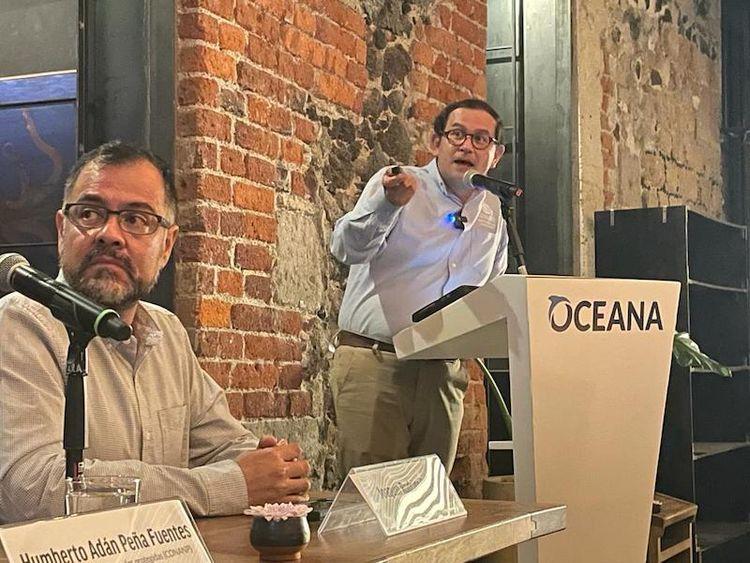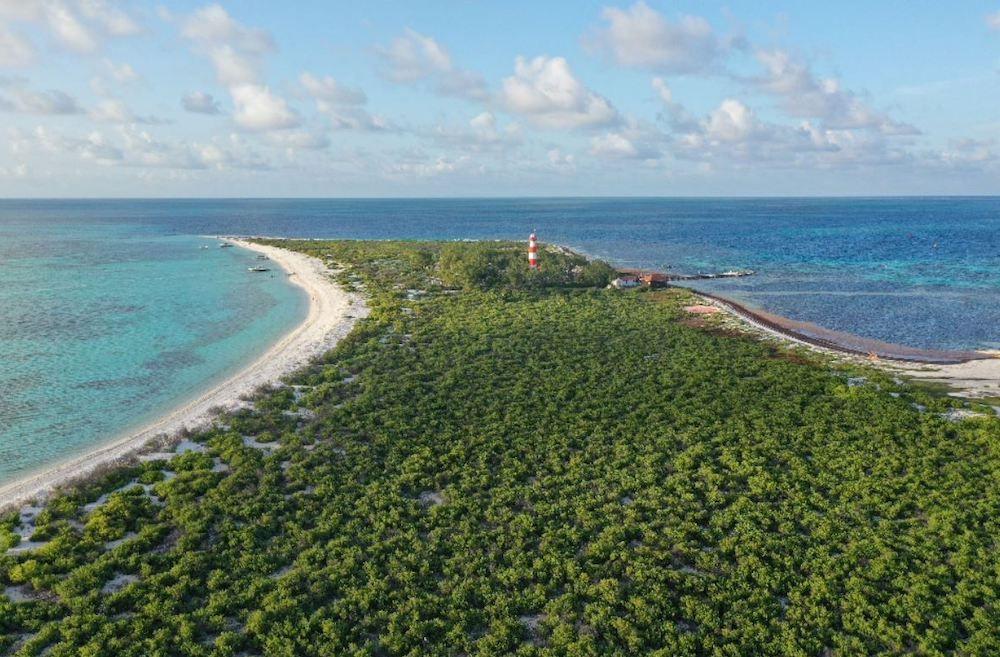After carrying out a marine expedition, the civil organization Oceana in Mexico recommended that the National Commission for Protected Natural Areas (Conanp) expand the core area of the Arrecife Alacranes National Park to the southeast of the country by 38 square kilometers.
When comparing the results of the recent expedition with those taken in 2000, the difference in the average cover of live coral in Alacranes varied -1.3 percentage points, from 15.1% to 13.8%, said Dr. Rodrigo Garza, professor at the Faculty of Sciences of the National Autonomous University on the Sisal campus, Yucatán.
“Maybe they'll say good but that's where it got lost. Part of this difference may be because the same sites that were visited 20 years ago were not visited, but to give you a reference site, in places like Akumal, in Quintana Roo, the loss of coral cover has been 85%. When we see a difference of 1.3%, Alacranes is actually like 30 years ago and this is very good news,” said the researcher, one of the scientists who collaborated with the organization.
However, in this study, they detected reef-building corals that are not part of the core zone, but rather a buffer zone (so called because they function as a protection belt). Something that could be corrected by expanding the boundaries of the polygons in the core area.
The area has been amazed by the diversity of species and the studies of the expedition, undertaken in the field last year, confirmed the richness of the area, reflecting that the number of species detected with molecular techniques is “much greater” than with traditional methods. These understudied or unknown species are the subject of future research.
The report “Alacranes Project: Oceana 2023 Scientific Expedition Report” highlights that 9% of the National Park's reef showed a reduction in areas dominated by algae in the last 20 years, a condition that helps coral recovery.
Garza has named the natural area as the “Jewel in the Crown of the Gulf of Mexico”. It contains the largest coral structure in the Gulf, with 300 square kilometers.
Receiving the data
The head of Conanp, Adán Peña, acknowledged that this report full of metadata of what is happening in the marine protected area will help him make decisions, as has happened in the past.
“The participation of Océana gives us data, we are going to update the management program, the data they are offering us we are going to use to update our program and that will serve to make public management policy decisions; moving forward in specific management is information that we have to evolve in the following reports,” said Peña.

On the left, Professor Rodrigo Garza; on the right, Adán Peña, commissioner of Protected Natural Areas. Photo: Juan Luis García
The official expressed particular interest in developing a baseline for future comparisons.
Looking ahead to a new phase of research, he asked for management recommendations in areas where progress can be made. He exemplified that if it is a deficit in surveillance, then it would be remarkable to know how many people are needed for support; or if it is a need for DNA monitoring, to know how often that information should be obtained.
“This evolution of data is what we would be very interested in having and the one we would have to attend to,” he said.
The previous Oceana report would have resulted in the addition of eight park rangers, three boats and two engines to the national park, he said.
No change in 30 years
According to the researchers of the expedition, the conservation of the National Park has also had an impact on the fish population.
In 1998 there was an estimate of 7.7 kilos of fish in 100 square meters, while by 2023 an estimate of 11.3 kilos of fish.
This difference of 3.65 kilos was also celebrated by Garza.
“This is really good news both for Conanp, because there you can see that the Alacranes Arrecife National Park Refuge reserve has served to protect fish and, on the other hand, all the efforts of fishermen to protect their resources is reflected here: in this gain of 3.6 kilos in weight per 100 meters,” said the professor.
The event was represented by the president of the Mexican Confederation of Fisheries and Aquaculture Cooperatives, José Luis Carrillo, who expressed his willingness to work with the authorities.
Peña did not miss the opportunity to stress the need for a dialogue for a management program in which fishermen play the main role.
“They are the main ally and with them we have to build the measures, and define the zoning, to increase productivity while improving the ecosystem,” he said, in what would be a first position in response to the recommendation to expand the core area of the coined Jewel of the Crown of the Gulf of Mexico by the research team.
Peña also wanted to stop with an announcement the notes of the report referring to the presence of invasive species in the National Park.
“I want to tell you that we are going to have an additional budget for invasive species this year, we are going to include Arrecife Alacranes and we are going to support a couple of additional projects to address the issue of lionfish. That's already a ceiling for this year, we're announcing it here,” he said.



Comentarios (0)